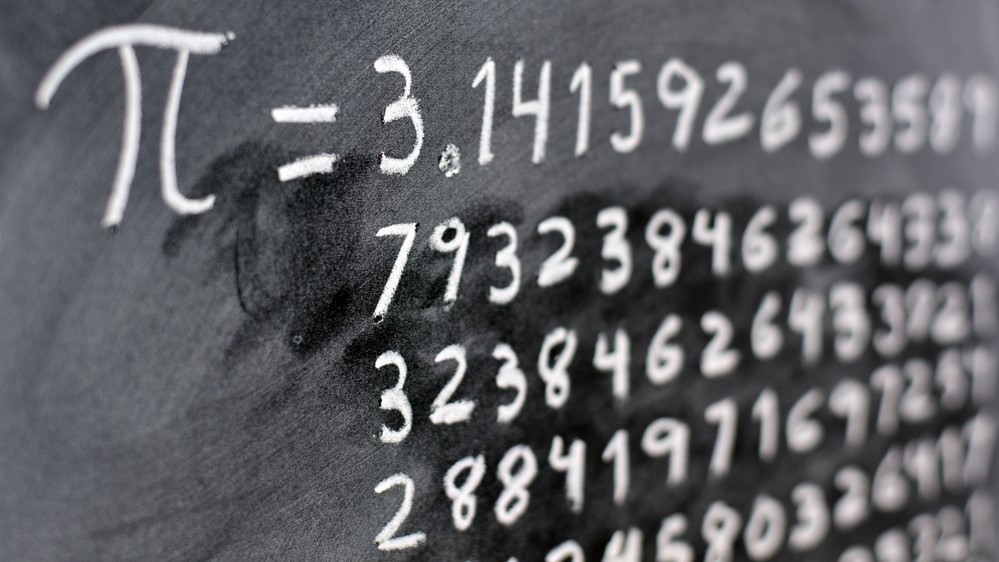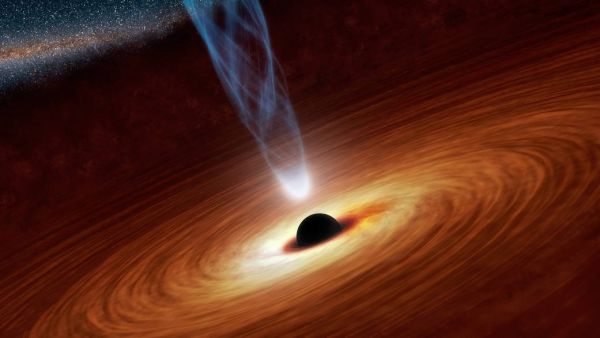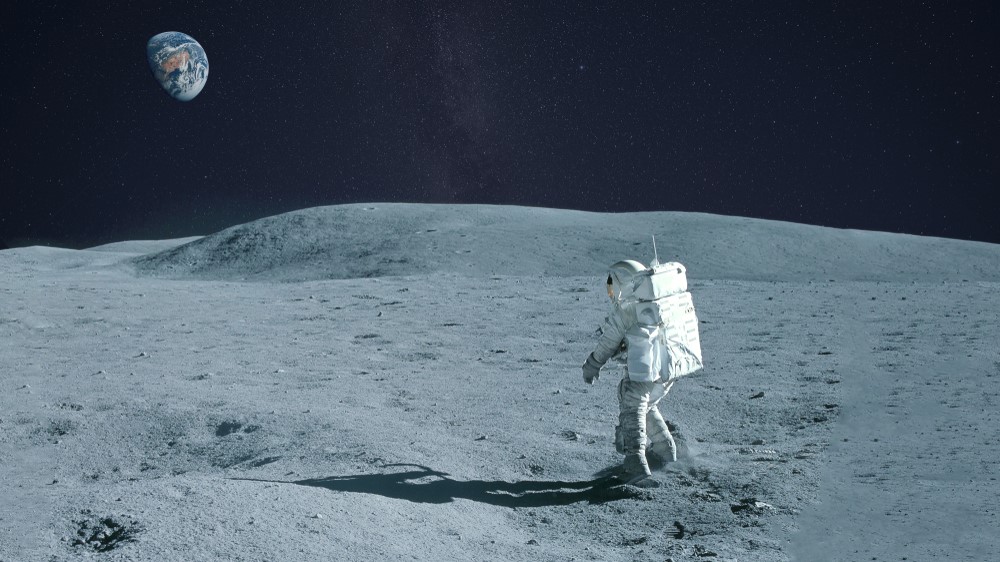10 weird things scientists calculated in 2021
Have you ever wondered how many bubbles were in a glass of beer?
The world is full of beautiful equations, numbers and calculations. From counting beads as toddlers to managing finances as adults, we use math every day. But scientists often go beyond these quotidian forms of counting, to measure, weigh and tally far stranger things in the universe. From the number of bubbles in a typical glass of beer to the weight of all the coronavirus particles circulating in the world, here are 10 weird things scientists calculated in 2021.
Related: Photos: Large numbers that define the universe
Beer bubbles

Pouring ice-cold beer into a glass forms lots of tiny bubbles — and thanks to some thirsty scientists, now we know how many.
These scientists calculated that a half-pint glass of beer produces up to 2 million bubbles, about twice as many bubbles as Champagne makes. But the researchers found that the number of bubbles in a half-pint glass ranged from 200,000 to 2 million, according to their study, published in March in the journal ACS Omega. It turns out that the number of bubbles depends on three factors: the concentration of dissolved carbon dioxide (CO2) in the glass, the volume of bubbles and the point at which the CO2 depletes such that no more bubbles form. Also, tiny flaws in the glass would help bubbles emerge from the liquid.
Read more: How many bubbles are in a glass of beer?
Weight of SARS-CoV-2

If you were to gather all the particles of SARS-CoV-2, the virus that causes COVID-19, circulating around the globe into one place, the weight of the tiny, invisible particles would be somewhere between that of an apple and a young toddler, according to a study published in June in the journal Proceedings of the National Academy of Sciences. That calculation is based on the estimation that each infected individual carries about 10 billion to 100 billion SARS-CoV-2 particles at the peak of their infection. If there are between 1 million and 10 million infections at any given time, which has been the case during the course of the pandemic, the particles together would weigh somewhere between 0.22 and 22 pounds (0.1 and 10 kilograms).
"Here we are talking about a super-tiny mass of viruses, and they are completely wreaking havoc on the world," the researchers told Live Science.
Sign up for the Live Science daily newsletter now
Get the world’s most fascinating discoveries delivered straight to your inbox.
Read more: How much does all the SARS-CoV-2 in the world weigh?
Elephants from space

Using satellites and artificial intelligence, researchers counted African elephants from space for the first time, according to a study published online in Dec. 2020 in the journal Remote Sensing in Ecology and Conservation. The team combined high-resolution images of Addo Elephant National Park in South Africa captured by satellites that orbit 372 miles (600 kilometers) above Earth's surface. This novel technique can survey thousands of miles in minutes, which is much faster than the typical way conservationists count elephants in low-flying planes, a process that can take hours. The researchers say this method could be vital for ensuring the survival of the African elephant (Loxodonta africana), a species the International Union for Conservation of Nature classifies as endangered.
Read more: Elephants counted from space using satellites and AI
Acceleration of a finger snap

Using high-speed cameras and force sensors, researchers figured out the fastest acceleration of the human body: a snap of the fingers. Finger snaps generate maximal rotational velocities of 7,800 degrees per second and a maximal rotational acceleration of 1.6 million degrees per second squared, according to a study published in November in the Journal of the Royal Society Interface. The acceleration of a finger snap is three times the acceleration produced by a professional baseball player's arm.
"When I first saw the data, I jumped out of my chair," study senior author Saad Bhamla, an assistant professor of chemical and biomolecular engineering at the Georgia Institute of Technology, said in a statement. "The finger snap occurs in only seven milliseconds — more than 20 times faster than the blink of an eye, which takes more than 150 milliseconds."
Read more: Scientists find the fastest acceleration in the human body
Most precise pi ever

Pi is one of the most famous irrational numbers, which means it can't be expressed as a common fraction and has an infinite number of digits after the decimal point. Researchers in Switzerland have now calculated the most precise value of pi ever, up to 62.8 trillion decimal places. Of course, the calculations, which took 108 days, weren't done by hand but rather with a supercomputer. But don't get too comfortable with this achievement. Because pi is irrational, this record can be broken over and over … forever.
Read more: Pi calculated to a record-breaking 62.8 trillion digits
Popularity of your friends

According to the "friendship paradox," an idea that was first formulated in 1991, your friends are typically more popular than you are. But a group of mathematicians came up with a new theory that they say better describes real-world friendships, according to a study published in May in the Journal of Complex Networks. "Averages are often highly misleading or at least can fail to describe people's experiences," lead author George Cantwell, a postdoctoral fellow at the Santa Fe Institute in New Mexico, previously told Live Science. "Some people are less popular than their friends; others are more so."
Their new equations show that the friendship paradox tends to be stronger in social networks made up of people with different levels of popularity, such as a high school. If a person has two friends in the same social network as a person with 100 friends, in general, the friendship paradox will be stronger than in a network where the most social person has 10 friends and the least social person has three.
Read more: The 'friendship paradox' doesn't always explain real friendships, mathematicians say
Black holes

How many black holes exist in the universe? These mysterious objects are so dense that not even light escapes themt. Astronomers can't detect all the black holes out there, so they turned to theoretical calculations. In a study published in October the preprint database arXiv, a group of researchers calculated that there might be millions of small black holes in our cosmic neighborhood, or the most immediate environment around the sun, according to NASA. The largest black holes, supermassive black holes, are much rarer than the smaller ones; each galaxy usually has only one. All in all, they calculated that black holes hold about 1% of all ordinary matter (not dark matter) in the universe.
Read more: How many black holes are there in the universe?
Walking around the moon

How long would it take to walk around the moon? The answer isn't black-and-white; rather, it depends on a number of factors, including how fast you walk and how much time you spend walking each day. It also depends on whether you take detours to avoid rough topography. At a hypothetical walking speed of up to 3.1 mph (5 km/h), which researchers previously calculated in a 2014 study, it would take about 91 days to walk the 6,786 miles (10,921 kilometers) around the moon, Live Science reported this year. But because it's not possible to walk nonstop for 91 days, the journey would likely take much longer. It's more likely that a person would walk a few hours a day. If a person walked at this speed for 4 hours a day, it would take about 547 Earth days, or about 1.5 years, to walk around the moon.
Read more: How long would it take to walk around the moon?
Satellites orbiting Earth

In another article, Live Science explored the question of how many satellites currently orbit the planet. Since Russia launched Sputnik, the world's first human-made satellite, in 1957, thousands of satellites have been lofted. About 10 to 60 were launched annually until the 2010s. Since then, the numbers have increased tremendously: 1,300 new satellites were sent to low Earth orbit in 2020 and more than 1,400 in 2021. As of September 2021, there were around 7,500 active satellites in low Earth orbit, Live Science reported.
Read more: How many satellites orbit Earth?
"Absolute limit" on the human life span

The "absolute limit" on the human life span may be 120 to 150 years, according to a study published in May in the journal Nature Communications. A group of researchers calculated that limit using a mathematical model, which predicted that after 120 to 150 years, the body would lose its resilience, or the ability to recover from illness and injury. But if future therapies targeted and extended the body's resilience, humans might be able to live longer, the researchers said. The data for the study came from large data sets that contained medical data for more than 500,000 people across the U.S., the U.K. and Russia. The data included blood tests in which the researchers specifically looked for the ratio of two types of disease-fighting white blood cells.
Read more: Human life span may have an 'absolute limit' of 150 years
Originally published on Live Science.

Yasemin is a staff writer at Live Science, covering health, neuroscience and biology. Her work has appeared in Scientific American, Science and the San Jose Mercury News. She has a bachelor's degree in biomedical engineering from the University of Connecticut and a graduate certificate in science communication from the University of California, Santa Cruz.










